Top 10 Sights in Salzburg
Myself, I am always on the lookout for hidden treasures, but sometimes you need to go with the flow. So here are the top 10 sights of Salzburg.
Salzburg is an old city that has been built, rebuilt, and expanded many times. Accordingly, there is a lot to see, making it truly challenging to judge what is more or less interesting.
Limiting oneself to a list of the top 10 attractions is quite a challenge, especially when it comes to a city as old and extensively developed as Salzburg. What is of great significance to one person may bore another visitor. Do I prefer to visit a museum or climb a viewing platform? How about a coffee with a Mozartkugel or a performance at the Stone Theatre? Hiking, culture, or culinary delights?
Well, since most visitors have a limited amount of time available - you can't have it all. So I will try to pick out the 10 most popular attractions, just as they are listed in standard travel guides. Fortunately, we are on the internet, so I can write about more great sights as I please, and you can read about them later.
-
Hohensalzburg Fortress
Mentioned first in 1077, the fortress has expanded over centuries. It offers stunning city views from its highest tower.

Hohensalzburg Fortress is first mentioned under Archbishop Gebhart in 1077 during the Investiture Controversy, though fortifications likely existed earlier (possibly Roman or older). The massive fortress was expanded whenever an archbishop anticipated conflict.
The largest expansion was under Prince Archbishop Leonhard von Keutschach, who added the four prominent towers. The turnip, the Keutschach family emblem, is displayed throughout the fortress.
A visit to the fortress is highly recommended! Not only does the funicular conveniently take visitors from Festungsgasse to one of the courtyards, but it also offers a great view of the city. Speaking of views, the platform on the highest tower of Hohensalzburg provides one of the most beautiful views in the entire city, though it can be quite windy up there.
-
Salzburg Cathedral
Built starting in 1598, the cathedral is a baroque masterpiece with a remarkable façade and interior.
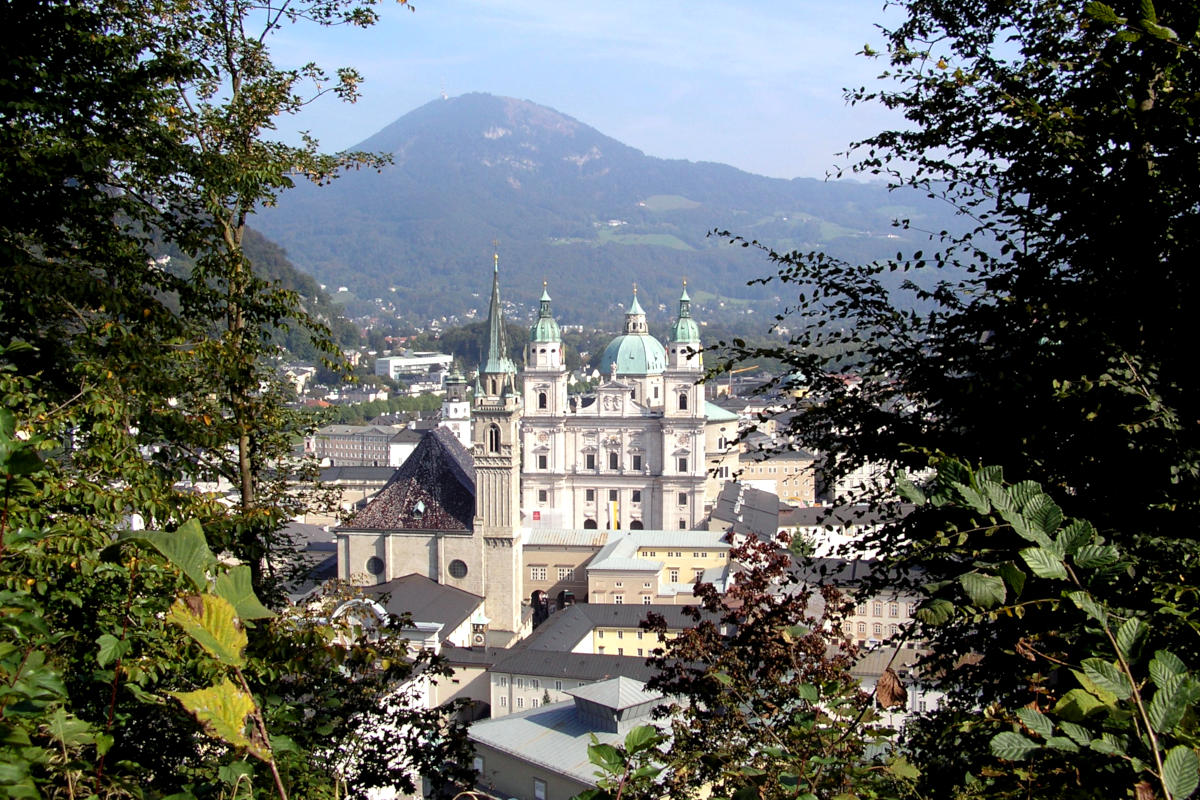
When the old Konrad Cathedral burned down in 1598, Archbishop Wolf Dietrich von Raitenau could finally commission the famous architect Vincenzo Scamozzi to create a Baroque masterpiece: The construction of the Salzburg Cathedral began.
However, Wolf Dietrich did not live to see its completion, as he was imprisoned by his relative and rival Markus Sitticus until his death. Scamozzi's plan was altered due to its immense size, and the construction of the current cathedral was entrusted to Santino Solari. Solari achieved an absolute masterpiece. Entirely in the Baroque spirit, the cathedral, with its façade of Untersberg marble and an interior where the paintings complement the stucco rather than the usual reverse, is a wholesome artwork of the highest order.
-
St. Peter's Abbey
Founded in 696, it has the oldest library in Austria and a famous cemetery with catacombs.
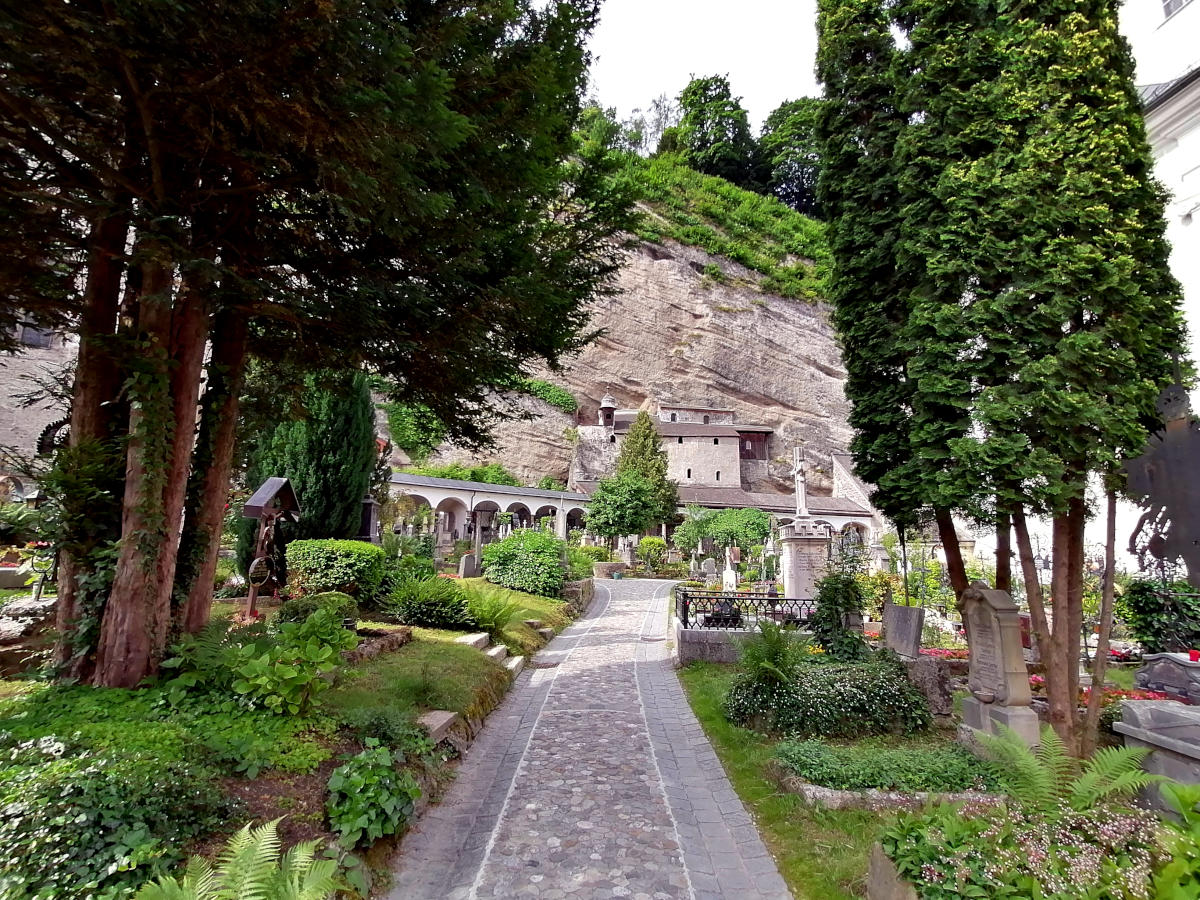
When Rupert was sent to Salzburg to prepare the Carinthian mission in the Southeastern Alps, he likely discovered a small monastery or at least a chapel at the site of today's St. Peter's Abbey. In 696, he founded or rather revived the community, and until 987, the Abbot of St. Peter was also the (Arch)Bishop in or of Salzburg. It was only Archbishop Friedrich I who separated the offices of Archbishop of Salzburg and Abbot of St. Peter, as a Benedictine Abbot should stay with his monastery, and Friedrich was often traveling with the Emperor.
St. Peter's Abbey was renowned as an excellent scriptorium in the Middle Ages, and even today, the monastery houses Austria's oldest library with some very interesting writings. The St. Peter Stiftskeller is considered the world's oldest continuously operating restaurant, and the cemetery with the catacombs is one of my favorite spots in Salzburg.
-
Getreidegasse
A historic and bustling shopping street, home to Mozart's birthplace.
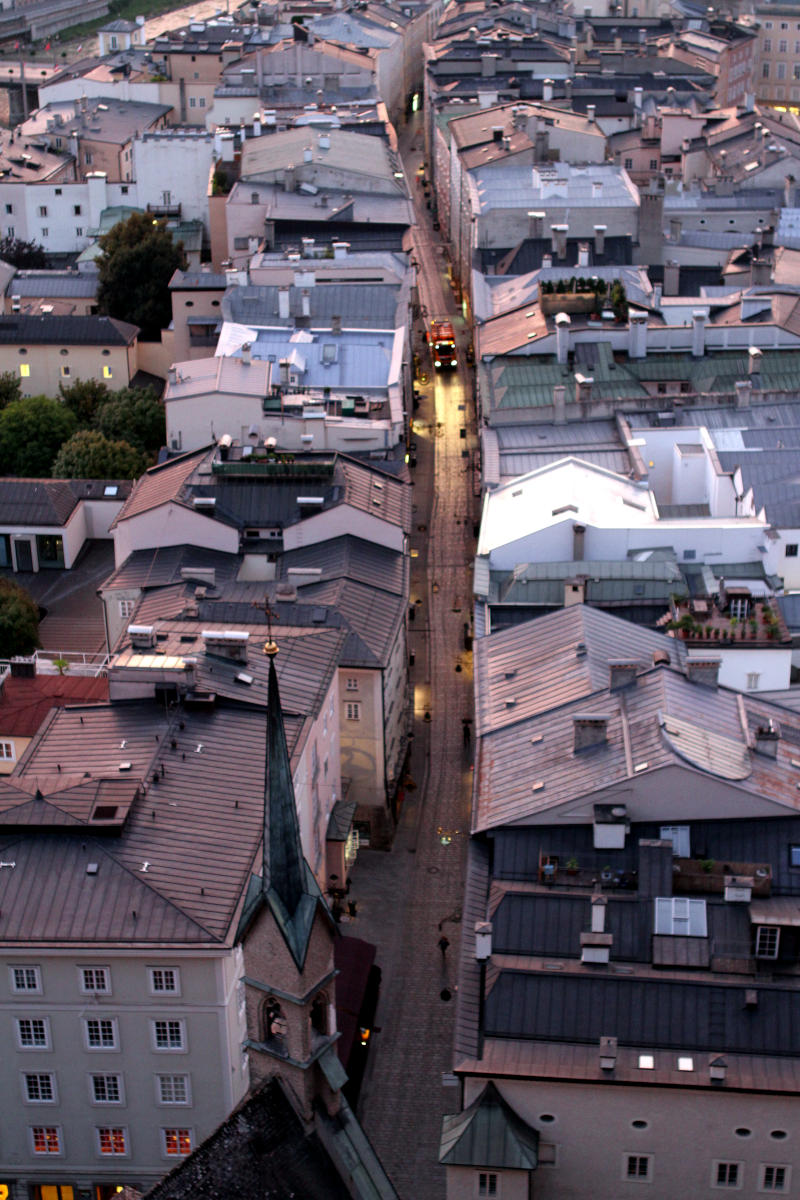
The worldly citizens of Salzburg always stood below the ecclesiastical rule of the archbishopric, St. Peter's, and Nonnberg Abbey. Therefore, despite Salzburg's historical significance in international trade, the city has only a small town hall. The town hall and many important bourgeois houses are located in the Getreidegasse. The name is somewhat misleading and originates from misunderstandings by the Viennese and the French, who were confused by the Salzburg dialect. Originally named Trabegasse ("trabig" meaning busy or hurried), it was misspelled by the French and mistranslated by the Viennese. Nevertheless, the Getreidegasse is Salzburg's old commercial street and is now an expensive area.
More and more international luxury brands are taking over the space, so if you are after a more reasonable shopping experience, head over to Linzergasse for example.
-
Mirabell Palace and Gardens
Built in 1606, the palace is known for its beautiful gardens and Marble Hall.
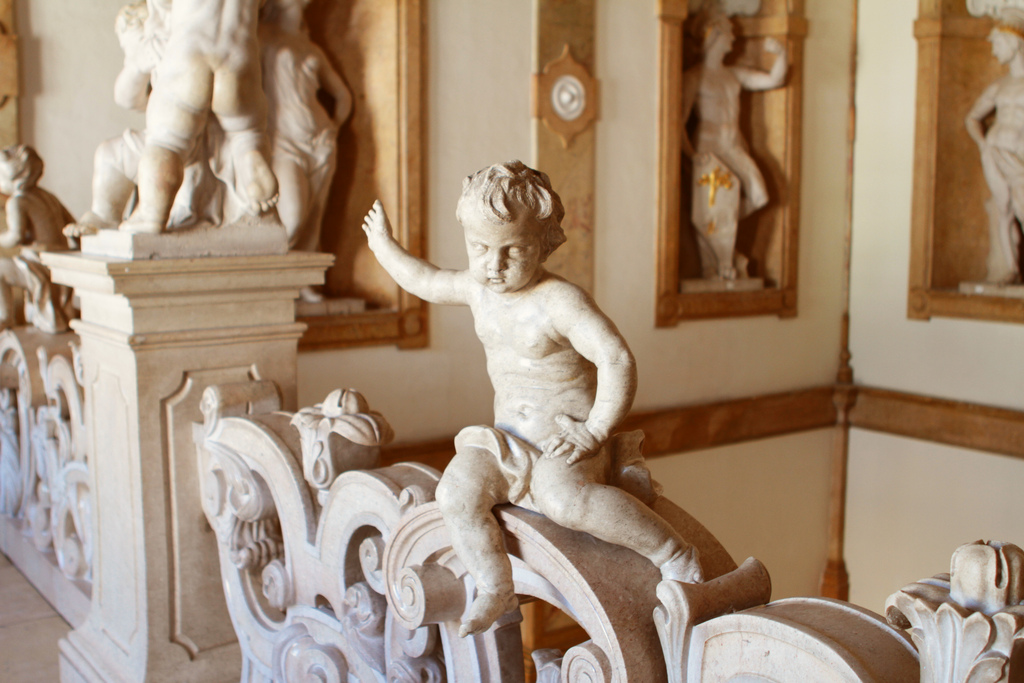
Wolf Dietrich again, of course he was one of Salzburg's most illustrious figures. For his Salome Alt, he had a pleasure palace with an extensive garden built in 1606. The entire complex was redesigned by Archbishop Johann Ernst von Thun in 1690 and has been preserved in its current form since then.
In addition to the garden, the Marble Hall is famous as one of the most picturesque wedding halls in the country, as is the Angel Staircase, a popular photo spot for newlyweds or not-so-newlyweds. Today, the city administration and the mayor's offices are located in the palace. The palace chapel is now the church of the Old Catholic community of Salzburg.
-
Hellbrunn Palace
A Mannerist-style pleasure palace with stunning gardens and trick fountains.

The pleasure palace Hellbrunn was constructed by Santino Solari under Prince-Archbishop Markus Sittikus from 1612 to 1615 in the Mannerist style. Schloss Hellbrunn was intended as a pleasure palace and was not designed for overnight stays. The original access road is Hellbrunner Allee, which is now a popular destination for cyclists, joggers, and walkers. The palace park is of exceptional beauty, and the water features are an attraction that every visitor to Salzburg must experience during Summertime.
-
Residenzplatz
Central square with the Residenzbrunnen fountain, surrounded by historical buildings and museums.

Residenzplatz (Residence Square) is a barren and bleak desert in the heart of the city - unless it's Rupertikirtag, the annual fun fair in September. Nonetheless, there are numerous interesting things to discover on, under, and around the square.
Let's start with the Residenzbrunnen (Residence Fountain), which remains impressive today but was a marvel of engineering at the time of its construction. The square is surrounded by the Cathedral, the Old and New Residence with the Carillon, as well as St. Michael's Church. Beneath the square is the Cathedral Excavation Museum and part of the crypt, accessible only through the Cathedral.
Also below the square is the memorial to the Book Burnings of 1938, which ought to be made more visible in my humble, yet strong opinion.
-
Sebastiansfriedhof
St. Sebastian Church and cemetery with the graves of notable Salzburg families and the famous Paracelsus.
In a conveniently accessible location roughly in the middle of the well-known Linzergasse, well hidden behind St. Sebastian's Church, lies the beautiful St. Sebastian's Cemetery.
Between 1595 and 1600, Prince-Archbishop Wolf Dietrich von Raitenau had the cemetery laid out in the style of an Italian Campo Santo. At the center of the cemetery is his mausoleum, the Gabriel Chapel. In addition to the Church of St. Sebastian, the graves of famous Salzburg families can be found, as well as those of Leopold Mozart, Constanze, and Georg Nissen. The tomb of Paracelsus between the church and the cemetery is also of great significance.
-
Mozart's Birthplace
A museum in the house where Mozart was born in 1756.
Getreidegasse 9, the birthplace of Wolfgang Amadeus Mozart on January 27, 1756, is one of the most visited houses in Salzburg. Until the move to the Tanzmeisterhaus in 1773, the Mozart family lived in an apartment on the 3rd floor of this house. Since 1880, the Mozarteum Foundation has maintained a museum in the house, inviting music lovers from all over the world to learn more about Mozart.
-
Salzburg Zoo
Located in Hellbrunn, the zoo hosts around 1500 animals from 150 species in a picturesque setting.

Last but not least, our zoo in Hellbrunn, an institution that originated from the Prince Archbishop's game park of Markus Sittikus (established between 1612-1619) and today covers an area of 14 hectares, housing approximately 1,500 animals from 150 different species. The Salzburg Zoo is nestled into the landscape around Hellbrunner Berg and is so picturesque that some animals even choose to settle there voluntarily.
More Sights in Salzburg
Salzburg is rich in history with many more attractions, such as the Franciscan Church, Almkanal, and Müllner Bräu, which are equally significant in my opinion and definitely worth exploring.
Enjoy your visit!
Newest Shenanigans
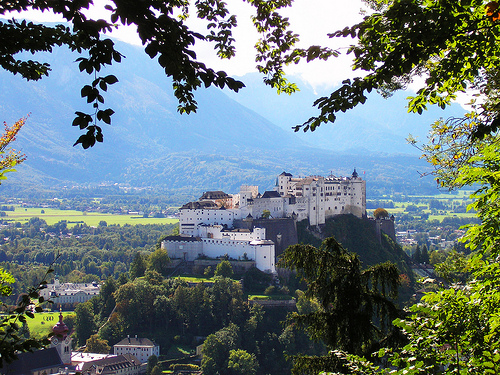 | Top 10 Sights in Salzburg Myself, I am always on the lookout for hidden treasures, but sometimes you need to go with the flow. So here are the top 10 sights of Salzburg. |
| Linzergasse Lane Linzergasse is one of the bustling shopping streets in Salzburg where shops alternate with cafés and restaurants. | |
| Sebastianskirche - St. Sebastian Church The probably most prominent building in the center of Linzergasse is the church dedicated to St. Sebastian. | |
| Dreifaltigkeitskirche - Trinity Church One of the lesser visited, yet quite interesting churches is the Dreifaltigkeitskirche or Trinity Church at Makartplatz in the New Town of Salzburg. | |
 | 12 must-see attractions in Salzburg, Austria Like most places on our planet, Salzburg is a city you need time to fully discover and appreciate. However, time is always hard to come by these days. So here is a list of 12 must-see attractions in Salzburg. |
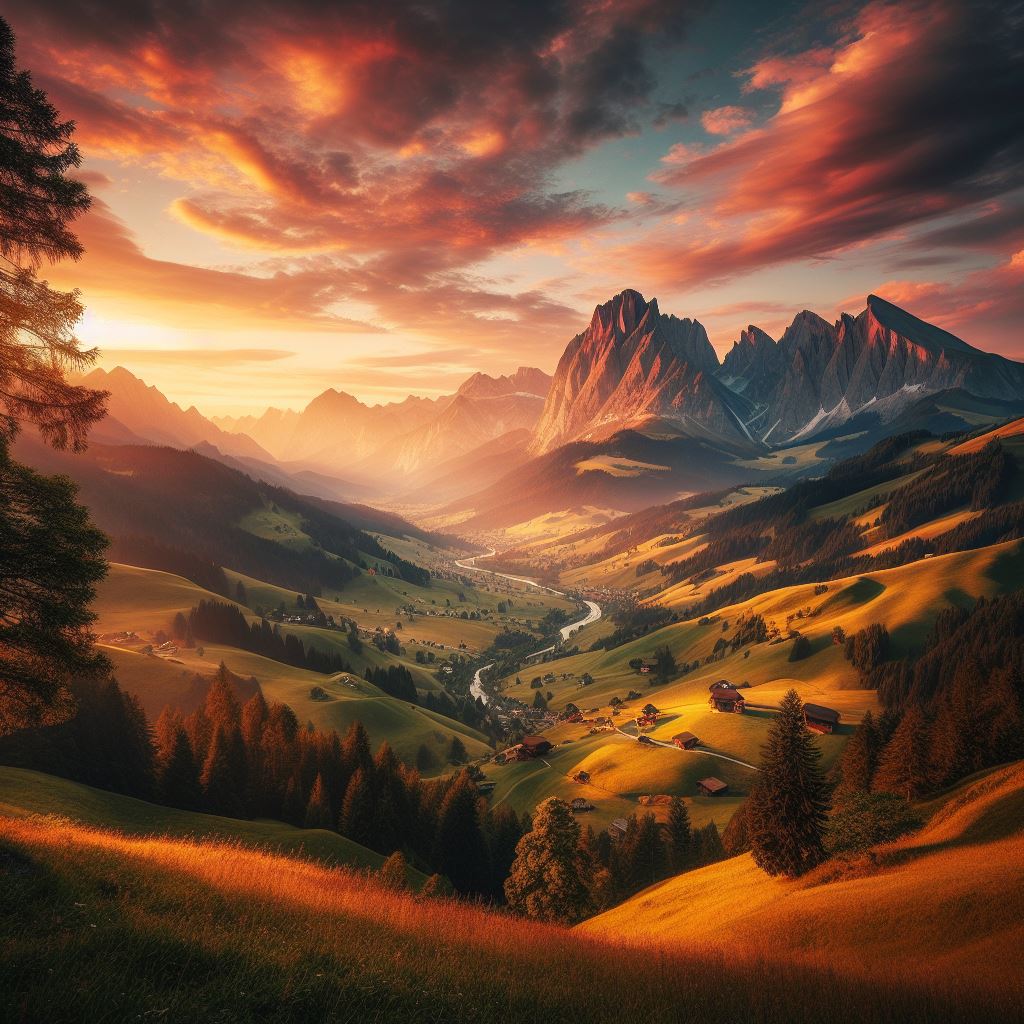 | The Enchanting Ways of Austria Austria boasts a breathtaking tapestry of landscapes, from the soaring peaks of the Alps to the rolling hills of the wine regions. |
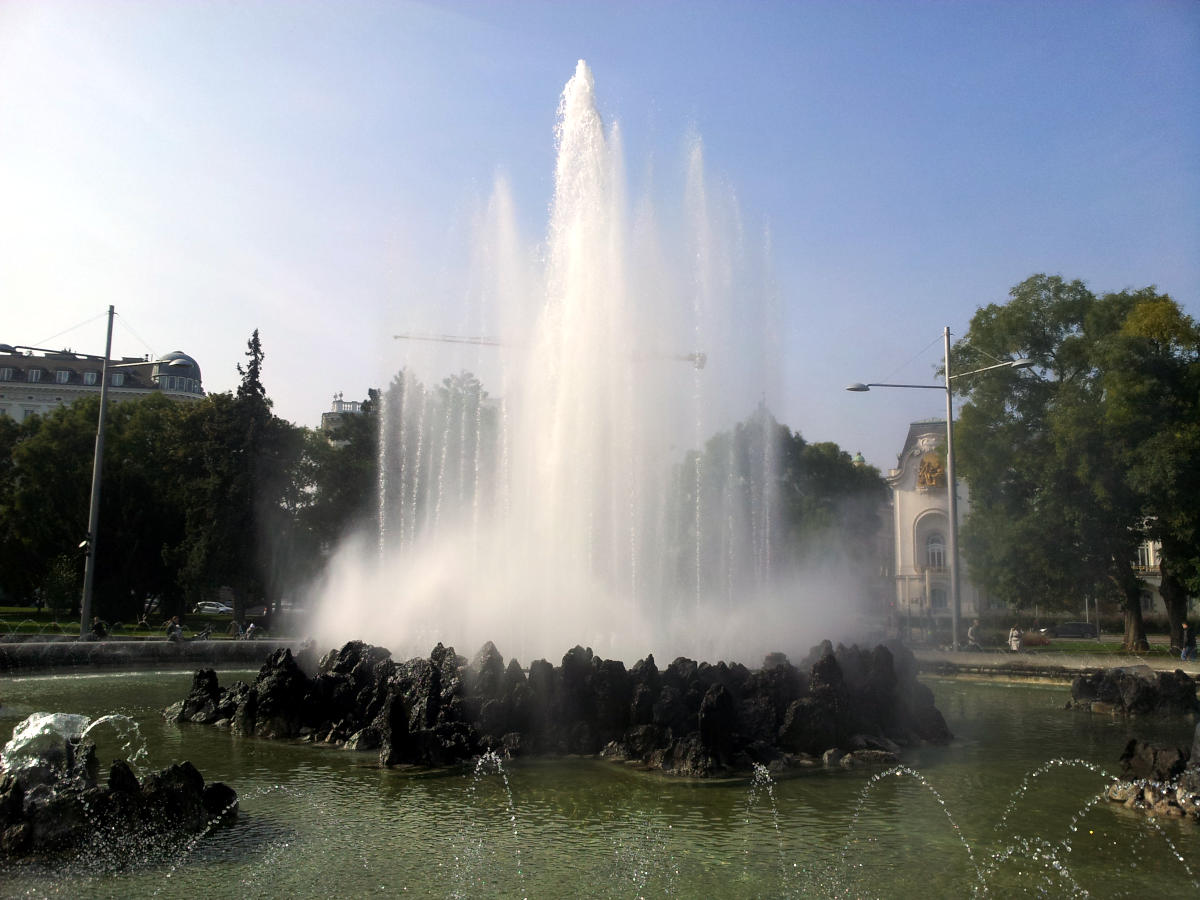 | 12 must-see attractions in Vienna, Austria There is never enough time to fully discover and appreciate a historic capital like Vienna, but we can try. So here is a list of 12 must-see attractions in Vienna. |
